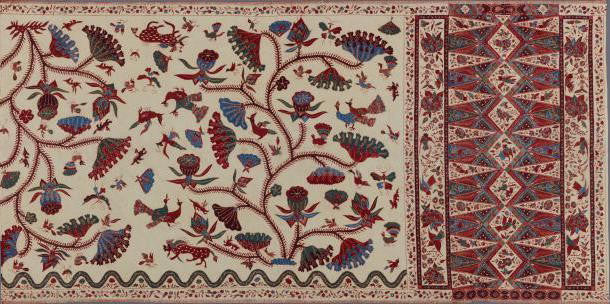
DECORATION IN WAX

In the world of textiles, nowhere has a more expert reputation for batik than the island of Java, Indonesia. One of the most complex and time consuming decorative arts, batik is a wax-resist dyeing technique embraced by craftspeople across the world, and at the Dallas Museum of Art right now you can see just how adept the Javanese are at this craft.

Waxed: Batik from Java is the museum’s show on now that presents a selection of Javanese batik made in the West and Central regions, where the main batik production was centered during the 19th and early 20th centuries. The museum holds a great collection of batik that started in 1982 when eight cloths collected before 1930 were gifted to the institution by Jerry and Mary Bywaters.

In Java, all of the raw materials needed for batik such as cotton, beeswax and many plants used to create dyes are readily available to local artisans. Historically, batik was carried out there under the patronage of the Sultan and his court with many artisans copying each other’s designs. It was said to have been forbidden, however, to copy any of the royal family’s batik designs. With styles differing by region across Java and Indonesia at large, Waxed: Batik from Java exhibits work from differing regions, offering an insight into the subtle variations of style found in the decorations made with wax.
For more information visit: https://www.dma.org/art/exhibitions/waxed-batik-java
